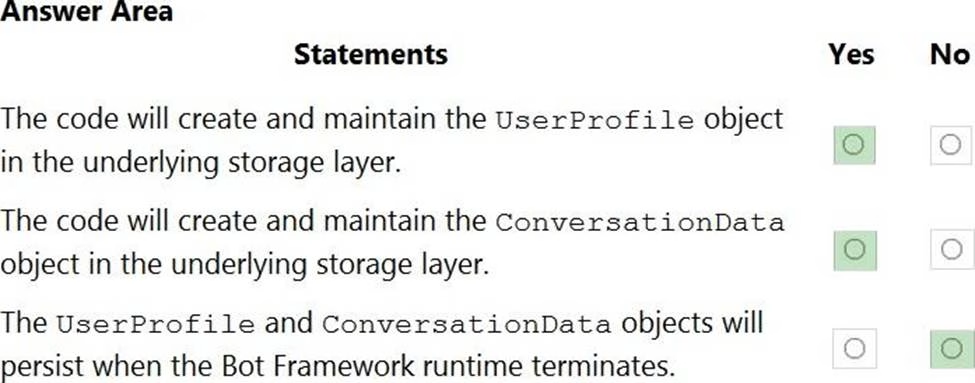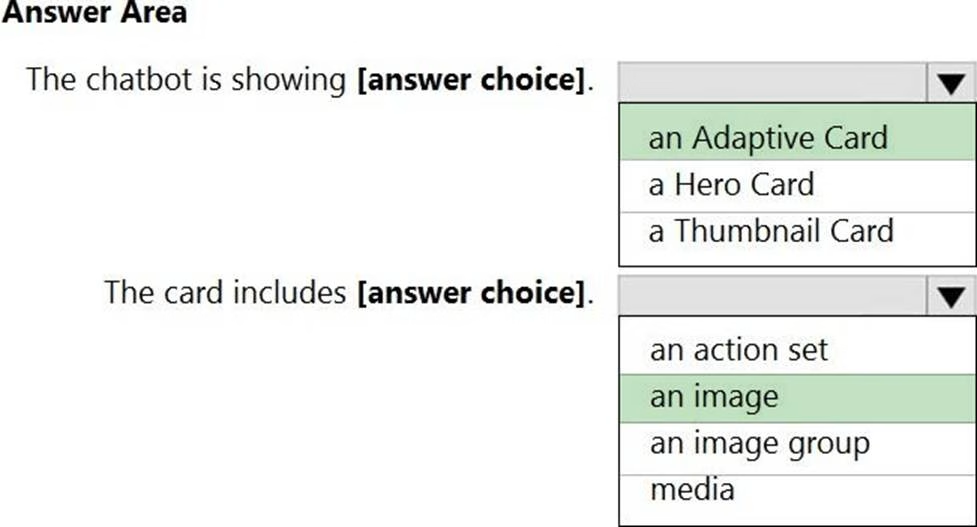Microsoft AI-102 Designing and Implementing a Microsoft Azure AI Solution Online Training
Microsoft AI-102 Online Training
The questions for AI-102 were last updated at Dec 22,2025.
- Exam Code: AI-102
- Exam Name: Designing and Implementing a Microsoft Azure AI Solution
- Certification Provider: Microsoft
- Latest update: Dec 22,2025
You build a conversational bot named bot1.
You need to configure the bot to use a QnA Maker application.
From the Azure Portal, where can you find the information required by bot1 to connect to the QnA Maker application?
- A . Access control (IAM)
- B . Properties
- C . Keys and Endpoint
- D . Identity
You build a conversational bot named bot1.
You need to configure the bot to use a QnA Maker application.
From the Azure Portal, where can you find the information required by bot1 to connect to the QnA Maker application?
- A . Access control (IAM)
- B . Properties
- C . Keys and Endpoint
- D . Identity
HOTSPOT
You are building a chatbot by using the Microsoft Bot Framework Composer.
You have the dialog design shown in the following exhibit.
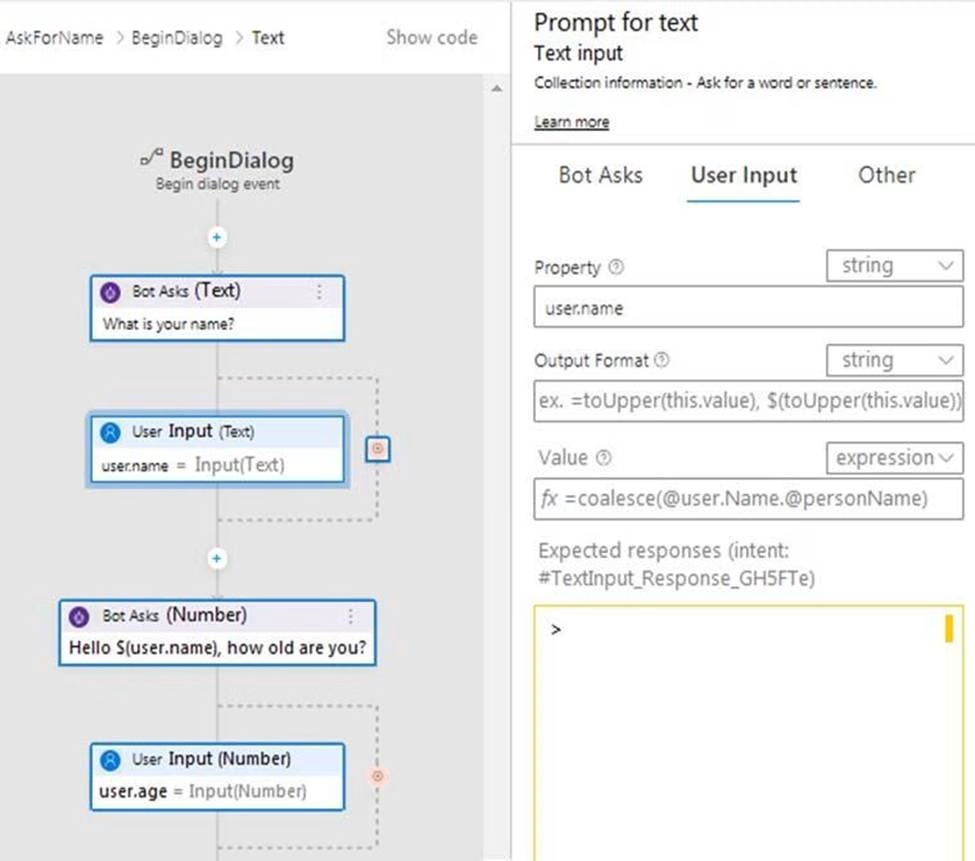
For each of the following statements, select Yes if the statement is true. Otherwise, select No. NOTE: Each correct selection is worth one point.

HOTSPOT
You are building a chatbot for a Microsoft Teams channel by using the Microsoft Bot Framework SDK.
The chatbot will use the following code.

For each of the following statements, select Yes if the statement is true. Otherwise, select No. NOTE: Each correct selection is worth one point.

HOTSPOT
You are building a chatbot by using the Microsoft Bot Framework SDK.
You use an object named UserProfile to store user profile information and an object named ConversationData to store information related to a conversation.
You create the following state accessors to store both objects in state.
var userStateAccessors = _userState.CreateProperty<UserProfile>(nameof(UserProfile));
var conversationStateAccessors =
_conversationState.CreateProperty<ConversationData>(nameof(ConversationData));
The state storage mechanism is set to Memory Storage.
For each of the following statements, select Yes if the statement is true. Otherwise, select No. NOTE: Each correct selection is worth one point.
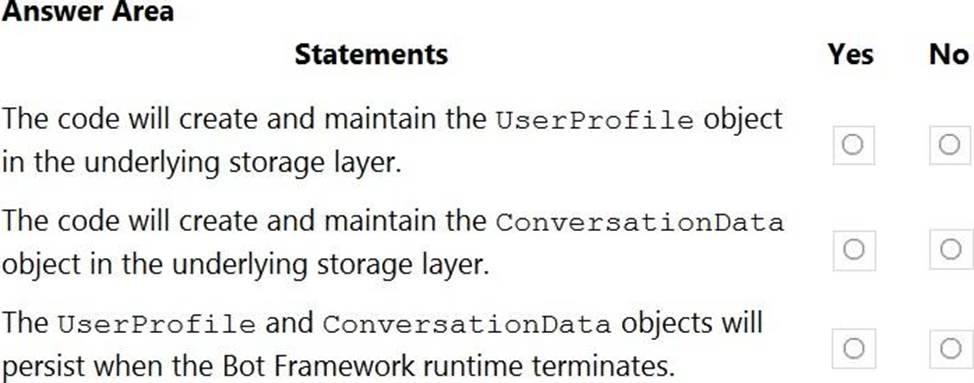
HOTSPOT
You are building a chatbot that will provide information to users as shown in the following exhibit.

Use the drop-down menus to select the answer choice that completes each statement based on the information presented in the graphic. NOTE: Each correct selection is worth one point.
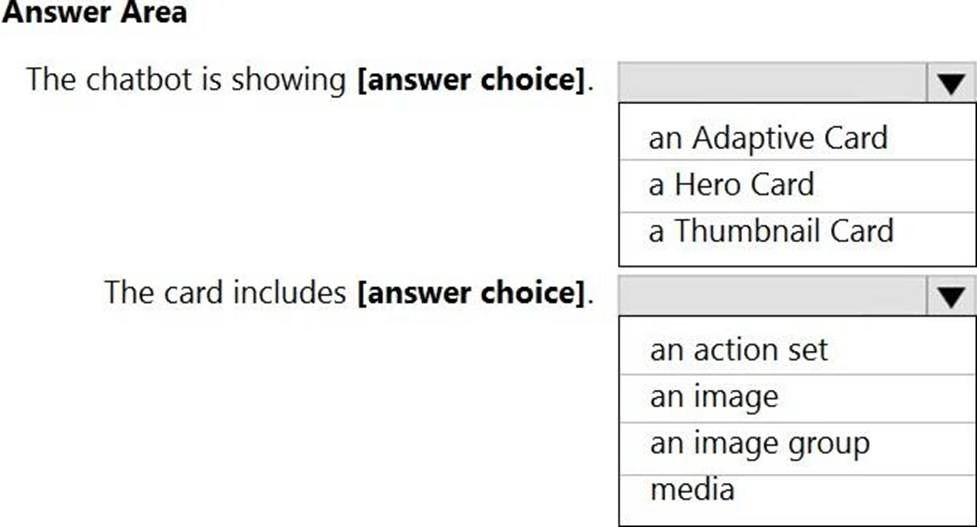
HOTSPOT
You are reviewing the design of a chatbot. The chatbot includes a language generation file that contains the following fragment.
# Greet(user)
– ${Greeting()}, ${user.name}
For each of the following statements, select Yes if the statement is true. Otherwise, select No. NOTE: Each correct selection is worth one point.

A customer uses Azure Cognitive Search.
The customer plans to enable a server-side encryption and use customer-managed keys (CMK) stored in Azure.
What are three implications of the planned change? Each correct answer presents a complete solution. NOTE: Each correct selection is worth one point.
- A . The index size will increase.
- B . Query times will increase.
- C . A self-signed X.509 certificate is required.
- D . The index size will decrease.
- E . Query times will decrease.
- F . Azure Key Vault is required.
You are developing a new sales system that will process the video and text from a public-facing website.
You plan to notify users that their data has been processed by the sales system.
Which responsible AI principle does this help meet?
- A . transparency
- B . fairness
- C . inclusiveness
- D . reliability and safety
Note: This question is part of a series of questions that present the same scenario. Each question in the series contains a unique solution that might meet the stated goals. Some question sets might have more than one correct solution, while others might not have a correct solution.
After you answer a question in this section, you will NOT be able to return to it. As a result, these questions will not appear in the review screen.
You create a web app named app1 that runs on an Azure virtual machine named vm1. Vm1 is on an Azure virtual network named vnet1.
You plan to create a new Azure Cognitive Search service named service1.
You need to ensure that app1 can connect directly to service1 without routing traffic over the public internet.
Solution: You deploy service1 and a public endpoint to a new virtual network, and you configure Azure Private Link.
Does this meet the goal?
- A . Yes
- B . No
Latest AI-102 Dumps Valid Version with 80 Q&As
Latest And Valid Q&A | Instant Download | Once Fail, Full Refund



